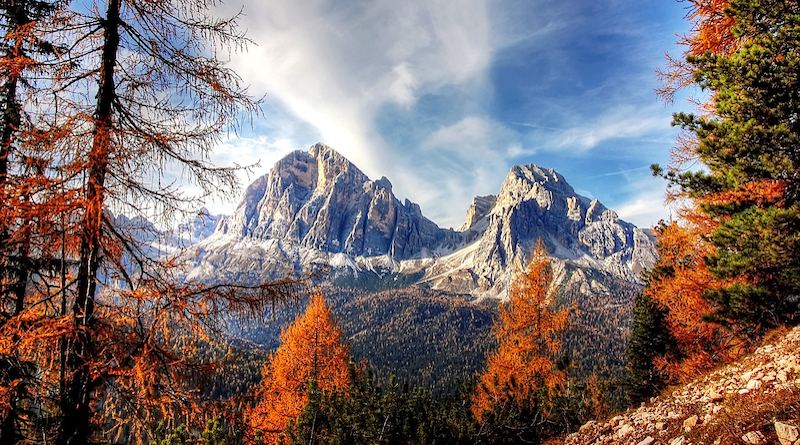Climate Crisis Could Reshape Italian Mountain Forests Forever
As a result of the climate crisis, future forests may become unrecognizable. Trees that currently make up European woods may no longer be seen — or they may have moved several hundred meters uphill. Scientists writing in Frontiers in Forests and Global Change have mapped the forests of five vulnerable mountain areas in Italy and modelled the future of these fragile ecosystems.
“If I imagine my daughter walking with me as an old man, in our mountain forests, I can imagine that we can see the initial stage of a profound change of species,” said Dr Sergio Noce of the Euro-Mediterranean Center on Climate Change Foundation (CMCC). “Like any natural process, time is needed, and forests have times that are totally different from us.”
Seeing the wood for the trees
Forests provide valuable resources for communities. Wood products and wild foods like truffles may boost the local economy, while forests influence water availability and quality, create and preserve soil, maintain biodiversity, and offer recreation opportunities.
About a third of Italy is forested and wooded areas are currently increasing. However, in recent years, droughts, storms, and fires have damaged forests, driving rapid environmental changes. Mountain forests are especially vulnerable to the climate crisis.
To understand and react to what’s happening, we need high-resolution climate data and reliable models that can project forward into the future and try to understand the implications of the climate crisis for these precariously placed forests.
Noce and his team developed species distribution models of forests in five areas across the Apennines and the Alps. They combined them with projections of climate change based on two scenarios: one where emissions are moderated and one where nothing changes. Using this data, they developed maps of land suitability for future trees out to 2050.
“Knowing which species will be advantaged or disadvantaged in future conditions can help us in planning, management, and conservation choices,” said Noce. “The forest provides humans with very important ecosystem services – the regulation of the water cycle, the biodiversity, the wood and non-wood products, the tourism, the capture and storage of CO2 and many others. Every choice made today impacts these services for years to come and must be made with as much knowledge as possible.”
The forests of the future
Noce and his team found that most species saw their suitable range grow smaller, while some may extend beyond the current tree line and gain a larger range – notably the European larch and the Turkey oak. This was the case under both scenarios, although the degree of change differed: the scientists suggested considering these as the upper and lower bounds of possible outcomes.
In general, the tree line is likely to shift upwards, and species with smaller, more specific ranges are more likely to be lost. It is also possible that high mountain ecosystems like alpine meadows will become rarer, as trees encroach on current meadows.
The team said that it was difficult to identify obvious winners or losers among the tree species studied. However, they found that the silver fir and European beech are especially vulnerable. Of the five regions studied, the northern and north-eastern Apennines were at the greatest risk, with all present species of tree vulnerable to change. Mixed stands of trees incorporating diverse species were more resilient.
Turning over a new leaf
It is also possible that some survivor species will introduce other vulnerabilities. The Maritime pine, a candidate for bolstering forests in the southern Apennines, is more flammable than trees which are currently common there. As the risk of fire is expected to rise, this could create serious issues.
However, the authors cautioned that the relationship between environmental variables and species presence may not remain the same as in the past. Change could still surprise us. However, these high-quality models could help identify species and forests that could survive the climate crisis.
“We can consider this work as an experiment to be extended,” said Noce. “We already plan to deepen our research in Italy thanks to the European funds of the Next Generation EU program, but we plan to do so also by expanding the geographical extent and the time horizon.”

